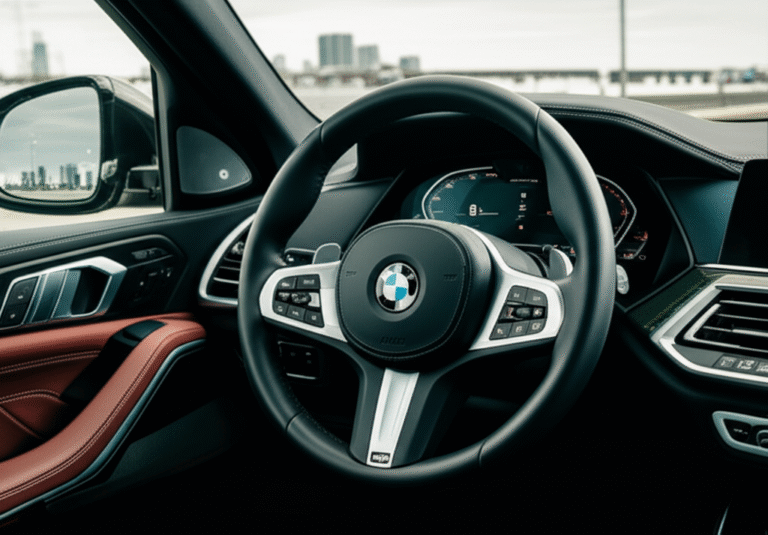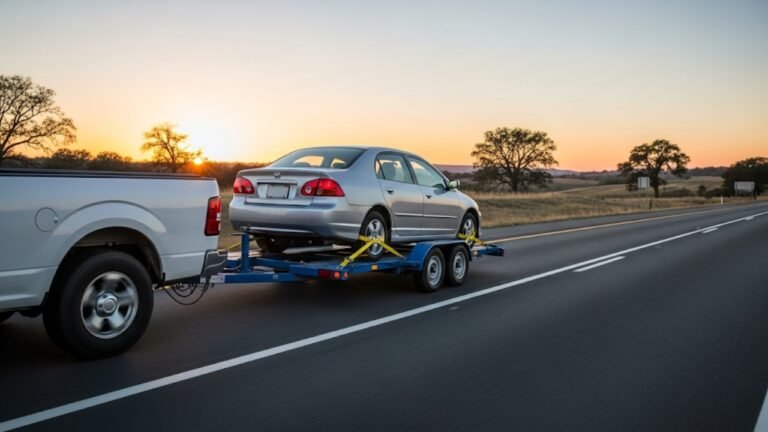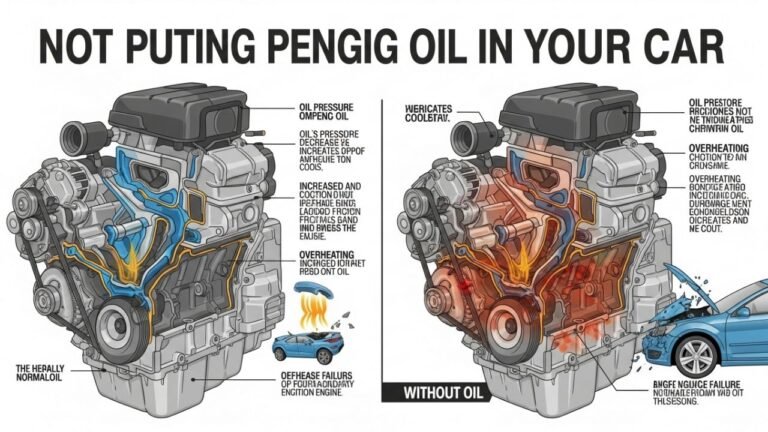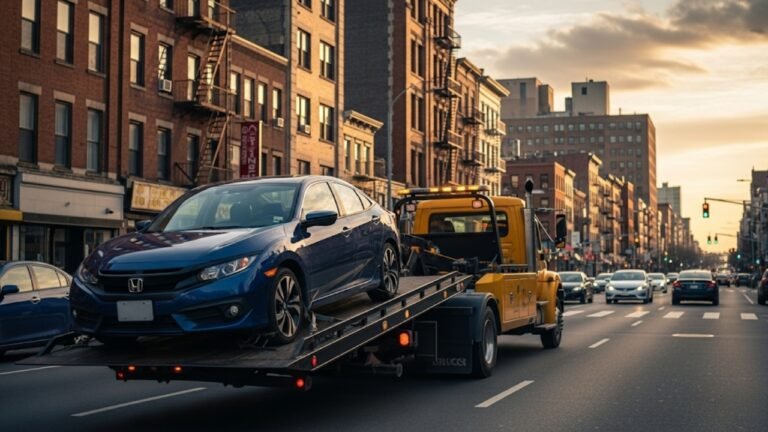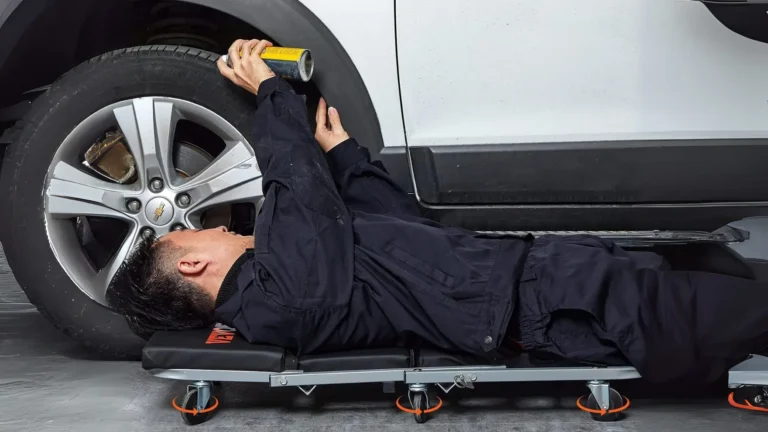What To Do in Case of Car Breakdown: A Roadside Survival Guide
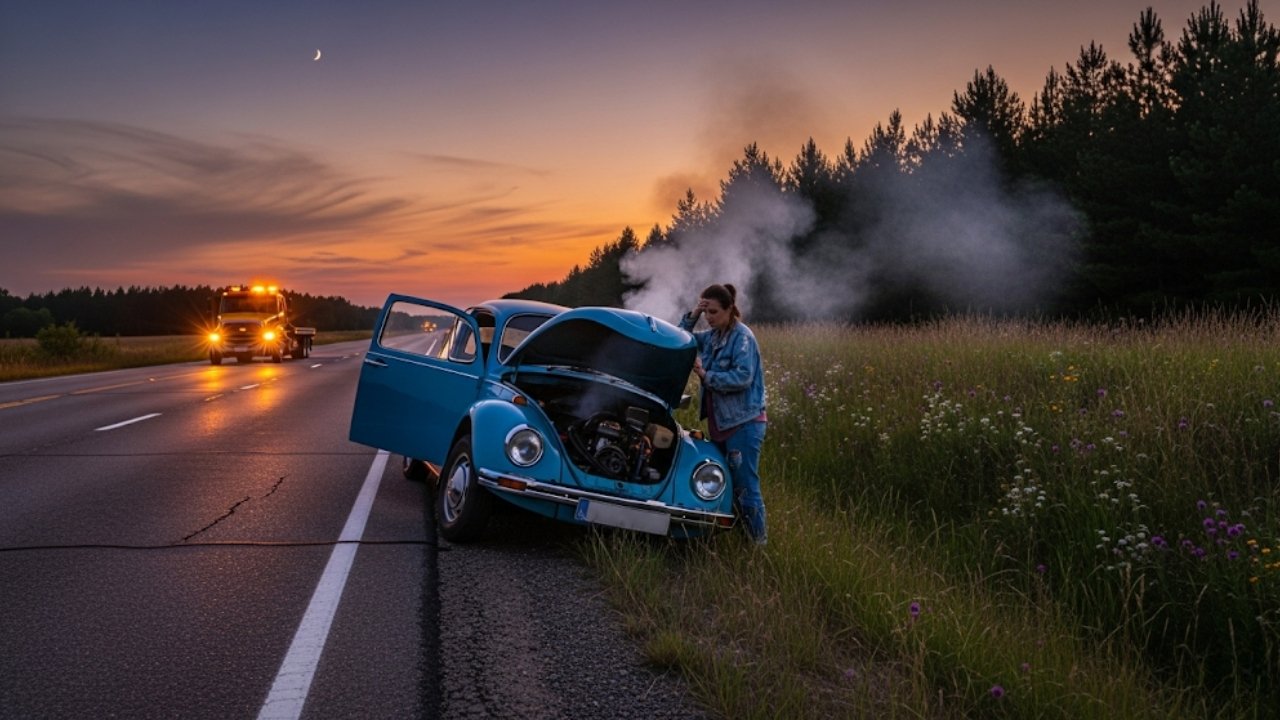
You’re cruising along a quiet highway. Your favorite song’s playing. Life feels smooth. Suddenly—thud, a jolt, warning lights on the dash… and your car slows to a crawl. Panic sets in. You’re stuck. Stranded. What now?
We’ve all been there—or fear we will be. Knowing what to do in case of car breakdown can turn a stressful crisis into a manageable inconvenience. This guide is your trusted co-driver in those moments. Whether you’re navigating a city traffic jam or stuck on a remote road, you’ll know exactly what to do.
With easy-to-follow advice, personal stories, and emotional relatability, this guide will help you act with confidence, keep yourself safe, and maybe even save money. Ready to master the art of keeping your cool on the roadside? Let’s dive in.
Stay Calm: Your First Step in Handling a Breakdown
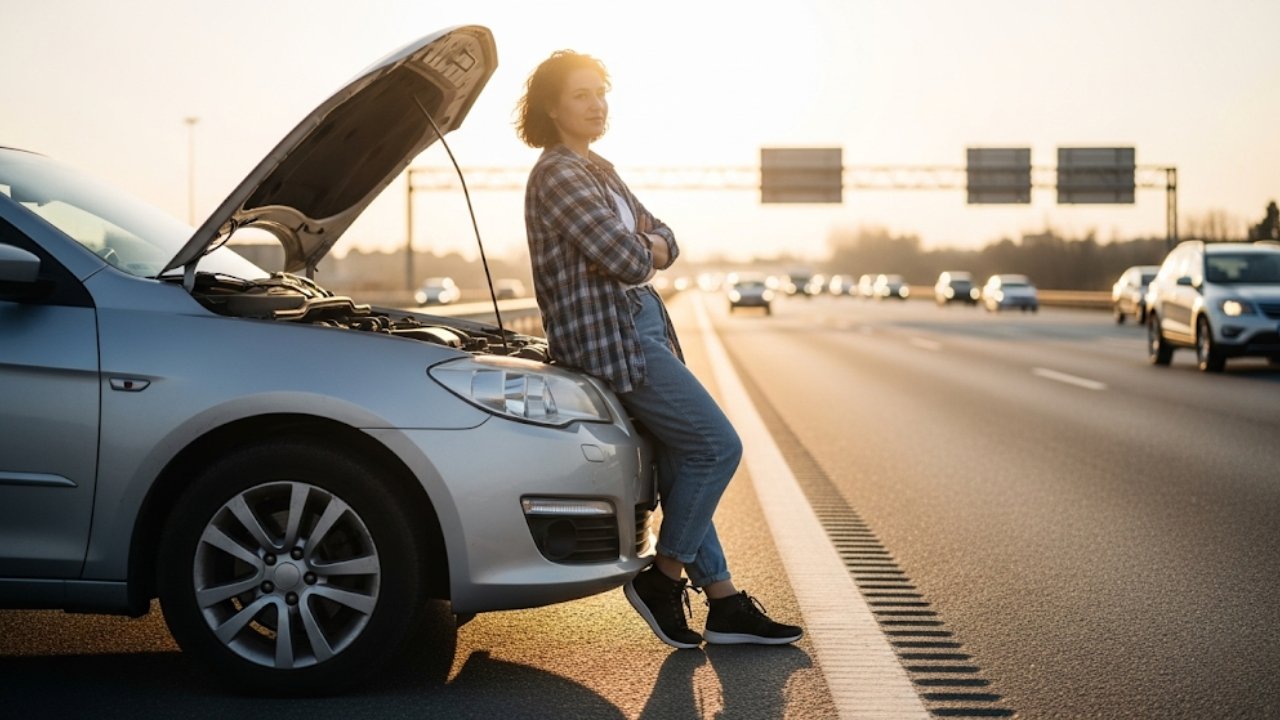
I remember when my cousin’s hatchback stalled in pouring rain. She freaked out, called five people at once, and forgot to turn on hazard lights. It only made things worse. The key? Deep breath. Assess. Then act.
When your car breaks down:
-
Breathe. You’re not alone—this happens every day.
-
Avoid knee-jerk reactions. Don’t slam brakes or swerve in panic.
-
Remember: your attitude affects your decisions. Calmness = clarity.
Keeping calm gives you control. That peace of mind ripples through every step you take next. It’s the mental airbag that cushions the blow.
Signal and Pull Over Safely: Securing the Scene
If your car’s still rolling, gently steer to a safe location. Safety trumps everything.
Here’s what to do:
-
Turn on hazard lights immediately.
-
Gradually move to the shoulder or side of the road.
-
Avoid stopping on curves or hills where visibility is low.
-
If on a highway, try to exit at the next ramp if possible.
-
Use your mirrors before merging or changing lanes.
Once you’re stopped, stay inside unless it’s unsafe. Keep your seatbelt on, especially on a busy road. Many forget this—but oncoming cars remain a threat.
If it’s night, foggy, or raining, switch on emergency blinkers and headlights to make your vehicle visible. You’re not just protecting yourself—you’re protecting others too.
Use Emergency Tools: Make Yourself Visible
There’s a reason experienced drivers carry an emergency kit. When your car breaks down, it’s your lifeline.
Place reflective warning triangles 10 to 15 feet behind your car. If you’re on a highway, go up to 200 feet for added visibility. Turn on interior lights if it’s dark.
Here’s a quick checklist of tools every car should carry:
| Emergency Tools | Purpose |
|---|---|
| Reflective triangles | Makes your vehicle visible to others |
| Flashlight | Helps with night-time inspection or signaling |
| Jumper cables | Useful if battery’s the issue |
| Tire inflator or sealant | Temporary fix for punctures |
| First-aid kit | Safety first |
| Phone charger/power bank | For emergency calls |
| Blanket | In case it’s cold out |
| Tow rope | Handy if someone offers to help |
Investing in a good emergency kit could be the difference between getting help fast—or freezing in a ditch.
Call for Help: Know Who to Contact First
When it comes to what to do in case of car breakdown, contacting the right people at the right time is crucial. Time is of the essence—but so is judgment.
Call roadside assistance if you have it—many insurance companies and automakers include it in their packages. Have your membership or insurance number ready.
If you’re in danger, such as being stuck in a high-speed lane or near traffic, dial emergency services immediately. Safety should always come before the car.
Helpful numbers to save in your phone:
-
Roadside assistance (e.g., your insurer or AAA)
-
Trusted mechanic
-
Local towing service
-
Emergency contact (family or friend)
Tip: Share your live location via WhatsApp or Google Maps with someone you trust.
It might feel awkward asking for help—but you’ll be surprised how many people are happy to assist. In moments like these, a little kindness goes a long way.
️ Diagnose the Issue (If It’s Safe)
If your surroundings are safe and you’re somewhat familiar with car basics, try checking what’s wrong. Sometimes, a minor issue has a quick fix.
Here are a few common symptoms:
-
Engine won’t start? Could be a dead battery.
-
Car jerking or stalling? May relate to fuel or spark plugs.
-
Overheating? Check the radiator (only when the engine cools).
-
Flat tire? That’s a visual check—and fixable with a repair kit.
But don’t play hero if you’re unsure. In my case, I once tried to jumpstart my car with reversed cables. Bad idea. It fried the fuse box, and the final bill? Let’s not go there.
So unless you’re confident and it’s absolutely safe, it’s better to wait for a professional.
♂️ Stay Inside (Most of the Time)
Here’s where things get nuanced. After a car breakdown, many drivers exit their vehicles right away. But is that safe?
It depends.
If you’re on a high-speed road, it’s often safer to stay inside with your seatbelt fastened. Standing outside puts you at risk from passing traffic.
Only exit if:
-
You can safely reach a sidewalk or embankment.
-
You need to place safety markers or triangles.
-
Your car is smoking or smells of fuel—this may mean fire risk.
When you do get out:
-
Use the passenger side door, away from traffic.
-
Wear a reflective vest, especially at night.
-
Be quick but cautious.
The golden rule? Your life matters more than the vehicle. Choose safety first—every time.
Use Your Smartphone Smartly
Your phone isn’t just for social scrolling—it’s your survival tool.
Here’s how to use it wisely:
-
Call your breakdown service.
-
Pin your exact GPS location.
-
Use Google Maps’ “Share Location” feature.
-
Take photos of the car and surroundings—for insurance, if needed.
-
Keep notes: What happened? When? Where?
Bonus Tip: Download an offline map app. If you’re stuck somewhere with no signal, you’ll still find your way or describe your area to helpers.
Your smartphone is your bridge to help. Keep it charged and use it like a lifeline.
Prepare for the Unexpected: Prevention Beats Panic
One of the best ways to deal with a breakdown… is to prevent it.
Simple maintenance can dramatically lower your chances of getting stranded:
-
Check oil levels and coolant regularly
-
Keep your battery terminals clean
-
Monitor tire pressure and tread depth
-
Replace old wipers and lights
-
Never ignore warning lights on your dash
Think of it like brushing your teeth—you don’t wait for a cavity to act.
Set reminders. Make a monthly checklist. It takes 10 minutes, and the payoff is peace of mind.
Night-Time Breakdowns: When Darkness Adds to the Drama
A car breakdown at night feels 10 times worse than during the day. You’re surrounded by shadows, silence, and uncertainty. Every sound feels louder. Every minute feels longer.
But night breakdowns don’t have to mean panic. Here’s how to stay safe:
-
Turn on all lights—hazard, interior, and fog (if available).
-
Use your phone flashlight or carry a lantern.
-
Avoid walking along the road, especially on highways.
-
Stay visible. Wear reflective gear or a light-colored jacket.
-
If you’re alone, keep your car locked while waiting.
True story—my friend Shuvo broke down outside Chittagong city at 11:30 PM. His phone was at 3%, and traffic was light. He stayed calm, messaged his brother his location, and waited inside the car until help came. Being alert saved him from what could’ve gone wrong.
At night, your best weapon is visibility and calm judgment. Don’t let darkness overpower logic.
️ Stuck Somewhere New? Stay Smart in Unfamiliar Areas
It’s one thing to break down near home. It’s another when you’re in an unfamiliar place, miles from anything—or anyone—you know.
So what do you do?
-
Stay inside unless it’s safe to explore.
-
Look for landmarks or signs to describe your location.
-
Avoid accepting help from strangers unless they look legit (uniformed, ID visible).
-
Lock your car doors if anyone suspicious approaches.
-
If someone offers a ride—don’t go alone. Wait for professional help.
A few years back during a road trip through Maharashtra, I broke down in a small village. I didn’t know the local language. But a kind tea stall owner helped translate between me and a local mechanic. Cultural respect and staying polite helped me navigate that awkward situation with grace.
When you break down in a new place, humility, respect, and street-smart instincts go a long way.
What If Your Phone Dies? (And You’re Really Stranded)
Let’s be real. Most of us live and breathe through our phones. So a dead phone battery during a breakdown? That’s nightmare fuel.
Here’s how to be prepared:
-
Always keep a fully charged power bank in your car.
-
Buy a solar-powered charger for long road trips.
-
Learn to flag down help safely—wave a white cloth or stand with both arms raised.
-
Use your emergency kit’s flashlight to attract attention in the dark.
Also, memorize at least two emergency numbers. I learned this the hard way. My phone once died in the Sundarbans area while driving back to Khulna. I had no power bank, no signal. I walked 2 km before finding a bus stand. It was scary—but it taught me to always carry backup power.
Don’t rely 100% on tech. Sometimes, old-school methods still save the day.
A Global Glimpse: Breakdowns Across Cultures
Breakdowns are universal, but how people handle them varies around the world.
-
Japan: Drivers use emergency flare kits and reflective flags.
-
Germany: It’s law to carry warning triangles and a high-vis vest.
-
India: You’ll often find a helpful chaiwala or passing trucker ready to assist.
-
USA: Highway patrol may stop to check if you’re okay.
-
Bangladesh: People crowd fast—some want to help, others just curious.
Cultural awareness helps. In rural areas, offering gratitude (like buying tea or giving a small tip) is a gesture of appreciation. In some countries, staying in your vehicle is the safest bet, while in others, flagging someone down is normal.
The key? Observe the surroundings, trust your gut, and stay respectful. Culture, after all, can be the best roadside companion.
❤️ Emotional Turmoil: When the Breakdown Feels Personal
Let’s not pretend this is just about cars. A breakdown can break your confidence, especially if you’re already dealing with stress.
You might be:
-
Late for an interview
-
On the way to pick up a loved one
-
Already overwhelmed with life
And now, this?
Take a moment. It’s okay to feel shaken. But remember, this is a pause—not the end. Your story is just hitting a speed bump, not a wall.
When I broke down after a long hospital shift, I cried in the car. But later, that moment became a funny memory. Because guess what? I handled it. And so will you.
What to do in case of car breakdown? Start by being kind to yourself. Then take the next step. And then the next. You’ve got this.
♂️ Frequently Asked Questions (FAQs)
1. What should I do immediately after a car breakdown?
Turn on hazard lights, pull over safely, stay calm, and assess the situation. Use warning triangles and call for roadside assistance.
2. Can I repair the car myself?
Only if you’re confident, it’s safe, and the issue is minor—like a flat tire or loose battery connection.
3. What if I don’t have roadside assistance?
Call a local mechanic, towing service, or emergency number. Ask passersby only if the area feels safe.
4. Is it safer to stay inside the car or get out?
Stay inside unless there’s danger (like fire or traffic hazard). If you get out, exit on the non-traffic side.
5. How do I avoid breakdowns altogether?
Regular maintenance: check fluids, battery, tires, and don’t ignore dashboard warning lights.
6. Should I call the police for a breakdown?
Only if you’re in a dangerous spot, have no phone signal, or feel unsafe.
7. Is it okay to leave the car and walk for help?
Avoid walking unless it’s a populated area and absolutely necessary. Always tell someone your plan first.
8. What if I have kids or elderly people with me?
Keep them calm, hydrated, and inside the car. Call emergency help as a priority.
Final Thoughts: Turning Chaos Into Control
Let’s face it—no one wants a breakdown. But life has a strange way of testing us when we least expect it. The real question isn’t if a breakdown will happen, but how you’ll respond when it does.
So the next time your car stalls and panic creeps in, remember this:
-
You’re not helpless.
-
You’ve got steps to follow.
-
You’ve got instincts you can trust.
-
You’re capable—even in crisis.
What to do in case of car breakdown? You breathe. You act. You endure. And then… you drive again—wiser and stronger.
Because a breakdown doesn’t break you. It builds you. And it teaches you how to keep moving, even when the road disappears for a while.

